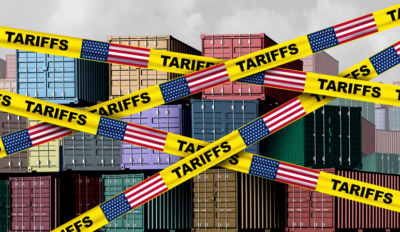Four Common Digital Retailing Disconnects

The retail automotive industry, by choice or by force, has experienced an undeniable and irreversible shift toward digital retailing – adapting and evolving to meet the ever-changing needs of today’s consumers.
What does this mean for dealers? It means buyers are always going to prefer to shop and transact on their own terms and your sales process needs to be flexible enough to meet all your customers’ needs.
- Traditional: This customer wants to do everything in person at the dealership.
- Hybrid: This shopper wants the best of both worlds. They complete the steps of the car buying process they enjoy in person at the dealership, but they would rather complete some tasks online.
- Digital: This customer would prefer to complete the entire car buying process remotely, without ever physically stepping foot into the dealership.
Thinking about what the customer wants to do, it is important for the retail automotive industry to accept that ~10% of shoppers today want to complete a fully online purchase (including remote contracting and delivery). Instead, the overwhelming majority of shoppers are ‘hybrid’ shoppers – meaning they want to start, progress, stop at their own pace online without any of the pressures – prior to their dealership visit.
For a detailed breakdown of how digital retailing is transforming the automotive industry, read our guide on leveraging digital retailing for your dealership.
In theory, with online retailing tools, the combination of technology and data should enable the dealer and the customer to come together much faster. The intended benefits are many, including greater than before sales volumes, higher F&I product uptake, faster transaction times, and higher customer satisfaction. However, though the intent is there, commonly the functionality is not.
In this article
Increasing Your Retail Effectiveness
Digital retailing can be thought of as a way to make the car shopping experience more convenient and less time-consuming for your customers and more efficient and profitable for you the dealer.
Digital retailing also means your dealership is never closed. Your showroom is always open. 90% of shoppers start their purchase online. Your website is your first impression. Buyers can shop late at night, or early morning, or Sunday afternoon – the hours most dealerships are not open. And since you are ‘virtually’ never closed, your DR solution should be powering a digital path-to-purchase experience that drives transactions 24/7.
Common Retail Automotive Selling Disconnects
It’s unrealistic to remove all retail automotive frictions for all customers and all buying scenarios but here are four common digital retailing disconnects to be aware of that can hinder your potential success:
1. Stop the Lead Generation Tactics
Most would agree that digital retailing (DR) done right, should provide the functionality and personalized information that allows the customer to confidently move themselves closer to a “yes” online – start and stop where they want – and pick up where they left off when they get to the dealership.
Most digital retailing platforms available today allow customers to perform initial car purchasing steps online, but there is a significant drop off in ‘offered’ digital functionality as the buyer moves closer to ‘the’ deal (i.e. Transactional pricing information, inventory availability, trade value, finance information, etc.) Instead, it is very common for buyers to be dead-ended into a lead form, or required to visit the dealership, when exploring affordability about their vehicle of choice. This is not digitizing the deal.
You are in the business of selling cars. Digital retailing is a deal generation tool. It’s the start of the deal. Think about what the customer wants to do, not what you want them to do. Sell the car, not the appointment.
To explore how eliminating finance frictions can improve your dealership’s digital retailing performance, read our blog on removing barriers in the car-buying process.
2. Close Enough Is Not Good Enough
At the risk of oversimplifying, people buy and will continue to buy from people they trust. You’ve heard the phrase “It’s not what you say, it’s what you do.” Your digital retailing goal is to move the customers to a ‘yes’. When information is inaccurate or unavailable, consumers don’t blame the technology – they blame the dealer. The two most common trustbusters, and why transactions can go sideways, are:
1. Your Pricing – Consumers are confused when they see vehicle pricing on your dealership website that is different than what they see on third party shopping sites. The confusion escalates to frustration when the online pricing is different than what they are quoted in-store. The pricing mis-matches may or may not be intentional, but they are inconsistent with your customers’ other retail experiences and breed mistrust.
2. Your Payment Tools – Many digital retailing platforms, self-penciling tools and standalone payment calculators provide inaccurate and/or misleading payment information. These tools are often returning unqualified payment quotes that establish unrealistic payment expectations. The misleading information ultimately creates more skepticism and unavoidable conflict when the terms cannot be honored in-store.
When pricing doesn’t match and payments don’t match, you’ve lost that customer.
Most shoppers today are ‘payment sensitive’ shoppers. They want real pricing information and want to know what the real payment terms will be before they commit to a specific vehicle. Make it easy and convenient for shoppers to find the information they are looking for – including applicable rebates, discounts and incentives. Information transparency is a trust multiplier. The more customers know, the more comfortable they are. The more comfortable they are, the more likely they are to buy.
3. Communication Gaps
Another common digital disconnect is the lack of real-time online communication and customer support. Today’s convenience-driven consumers demand better interactions. They will need unbiased guidance to navigate their many choices in a very complex transaction. If they can’t quickly get the help they need, they may abandon the process altogether.
Sell the way customers want to buy. Make it easy for your customers to communicate with you. Basic integrated communication options such as built-in messaging and email widgets are just the start. Your sales and F&I staff still have an important role to play. Leverage real time, advanced chat, messaging, and video solutions (e.g. Zoom, Facetime, etc) to engage with your shoppers and accelerate deal creation. These same video tools are perfect for pre-test drive virtual vehicle walk-arounds.
Learn how to optimize your dealership’s digital retailing strategy in our blog on best practices for automotive digital retailing.
A best practice, offer a dedicated 24/7 phone line with well trained staff or a specialist to answer questions – including price negotiation, deal structuring, finance information, presentation of aftermarket products – and reassuringly guide them through their journey. Remember, everybody likes to buy. Nobody likes being sold. Be in the business of helping your customer buy the car.
4. Poor Online to In-store Handoffs
Another disconnect, literally, is the inconsistent API capabilities across the various DR solutions and the multiple other platforms/systems involved in the deal flow (i.e. CRM, DMS, FMS, etc). In these situations, integrations are either missing or if they exist – their ability to support the real-time (not batch data), bi-directional information flow/exchange across platforms does not.
Beyond the well documented technology disconnects, in-store processes are often not aligned with the expectations established online.
Discover the challenges and opportunities of disrupting traditional sales models in our blog on navigating the complexities of automotive digital retailing.
Salespeople not having access/visibility to the information provided or the steps completed online – and other workflow gaps – leave DR customers treated no different than a cold walk-in. So the remote customer who has spent hours completing many steps of the transaction prior to the dealership visit, thinking they would be saving time at the dealership, has to start over!
A dealership shouldn’t be surprised when the customer works in the door. These disconnects create process redundancies and inefficiencies that are hugely frustrating to consumers and all but erase the intended benefits of DR for dealers. If your vendors are unable or unwilling to support open data integrations, perhaps you’re doing business with the wrong ‘partners.’
Eliminating the Disconnects
Digital retailing has been around for a while but now more than ever, dealers overwhelmingly agree that offering digital path-to-purchase options is key to their retail success.
Many dealers take the kitchen sink approach with their websites: let’s try this widget, let’s try that form, let’s try everything. You have to take a more holistic, linear approach. Think about what the customer wants to accomplish. How do they get from point A to B to C?
To understand if your digital buying experience is really simplifying and streamlining the process for your shoppers and your dealership, a great first step is to do these (3) things:
-
- Turn the customer mirror on your dealership and experience, without bias, what your customers experience. Online and in-store.
- Identify the gaps in your current customer experience that create information voids, trust barriers and dissatisfaction for your shoppers – and information disconnects, redundancies and other profit leaks for you.
- Align your technology, processes, and people to fill those gaps.



